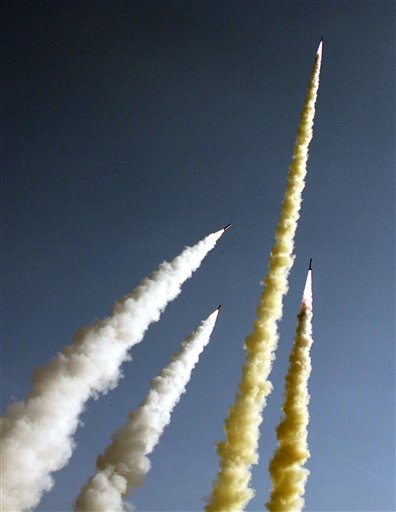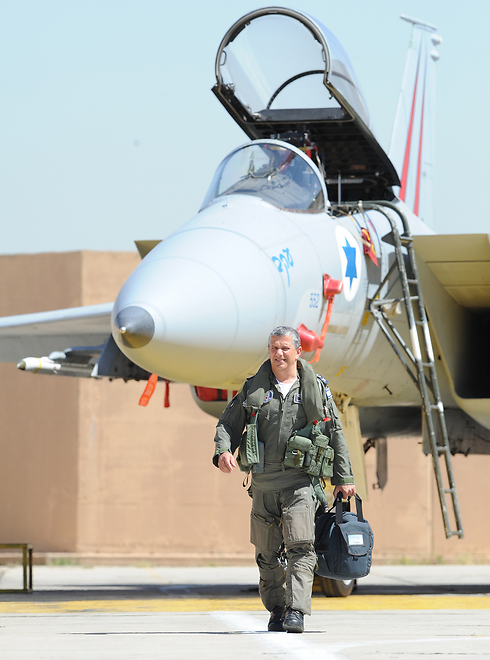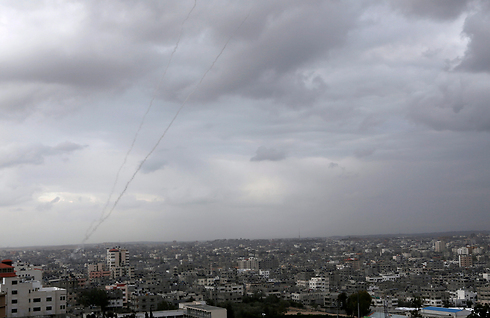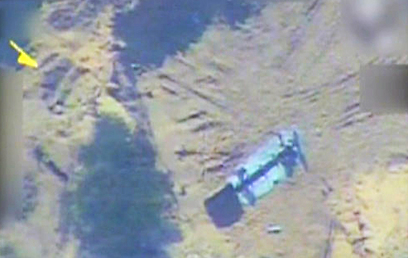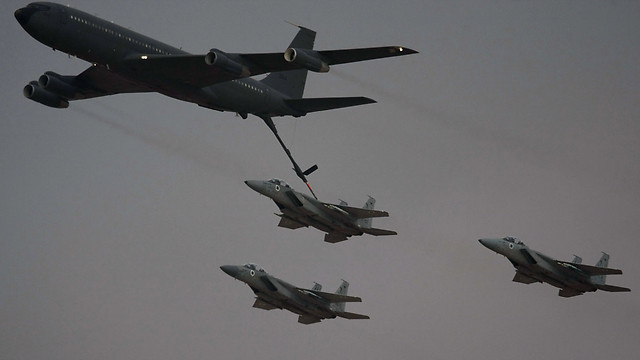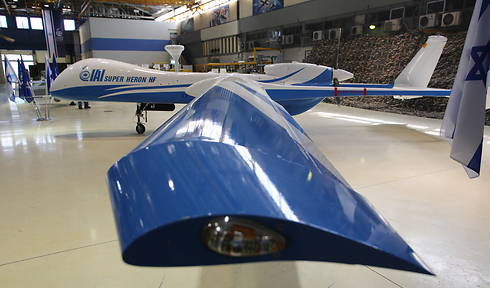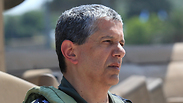
Israel Air Force is deadlier than ever
Analysis: IAF believes it can shorten next war on its own by striking thousands of targets a day, dropping more than 10 accurate bombs from one plane on different areas. Ron Ben-Yishai reviews revolution in aerial warfare branch perceived as 'Israel's insurance policy.'
But it won't last for long. The Israel Air Force will respond immediately, and after a few days we will see a significant drop in the number of missiles fired on Israel. A ceasefire will follow, there will be some more rocket fire, and then a truce and relative calm for several years thanks to the restored deterrence.
This is the serious but reasonable scenario the IDF is preparing for, and this is the political echelon's strategic target. It will be a "high-trajectory war." Whether the rocket fire comes from Syria, Lebanon, Gaza or Iran – the goal will to end it quickly in order to minimize damages and losses, while causing maximum damage on the other side, so that it feels the urgency to pursue a ceasefire.
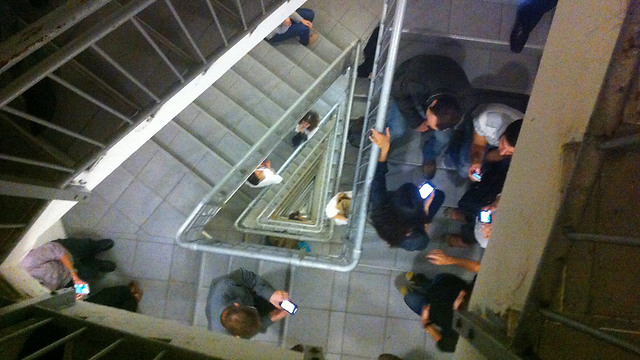
Israel Air Force (IAF) Commander Major-General Amir Eshel and senior IAF officers believe it is possible – and even more: With the intelligence, the arms and aircraft available at the Air Force's disposal, they believe it could reach the described achievements on its own, without the IDF having to maneuver its way into enemy territory, and it must be allowed to do so.
If Major-General Eshel and his people are right, we are talking about a significant reduction in the number of casualties and a huge saving in resources considering the astronomic cost – about NIS 1 billion ($290 million) – of every day of fighting. What the IAF commander is suggesting is in fact a real revolution in the IDF's combat perception, which will dramatically affect the need to equip and train the ground forces, and the budgetary list of priorities.
I already heard the claim that the Air Force can do the job on its own once before from Dan Halutz, when he served as IAF commander before being appointed chief of staff. That claim was proven wrong in the Second Lebanon War, and that's the reason it still raises many doubts today.
Of course not all senior IDF officers agree with the IAF's assessments. Many generals, who are aware of the Air Force's abilities and respect them, still believe that the army must operate on the ground in order to paralyze the firing of thousands of rockets and missiles.
The short period of action is also seen as unlikely. The IAF officials respond with quite a convincing argument: If we are attacked suddenly, it will anyway take us time to gather all the ground forces and overcome attacks on emergency depots and traffic arteries. At the same time, we will have an opportunity to get the job done through aerial attacks. Simultaneously, they say, we are preparing to offer the ground forces significant help in the fighting.
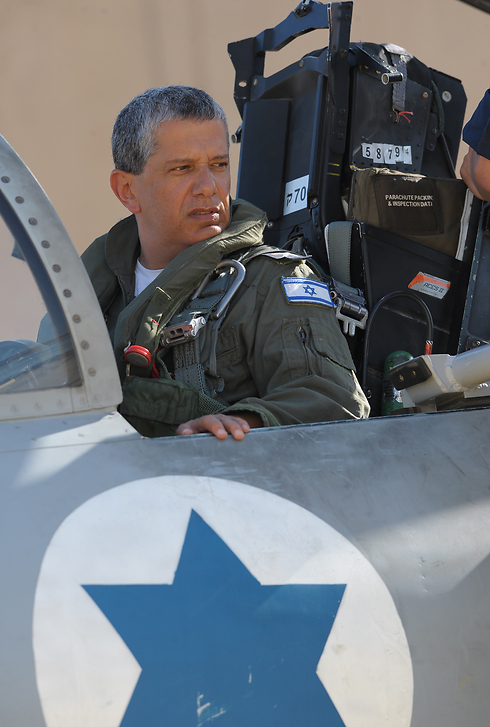
"We are not gambling," Eshel explains. "We know that we are perceived both by the public and by senior state officials as the people of Israel's insurance policy, and the expectations from us are high. Perhaps too high. But we are not confused. We remember that we're not alone and we are building an ability to integrate."
In Operation Pillar of Defense, he notes, the IAF prevented the need for a ground operation in Gaza, and the deterrence is more or less "working" till this very day.
I witnessed the IAF's preparations to significantly improve its ability to aid the ground forces several weeks ago, when I joined a detention and patrol activity in the Hebron area, which was combined with preparations for a war: A drill simulating the takeover of a Lebanese village.
As we moved forward, the Paratroopers Brigade commander pointed at a fighter bending behind a terrace, and whispered in my war that his name is Lieutenant Colonel T., the F-16 squadron commander. Quite an unusual event in the IDF reality.
T., who was equipped and armed and acted like a regular fighter, explained naturally that he had joined the operation at his own initiative because he wanted to understand how the infantry forces move and operate during fighting and how he and his pilots could help them from close up – very close.
A warplane helping ground forces with gunfire and missile fire is a "natural" mission. A warplane dropping a one-ton bomb on a house and delaying the progress of a ground force – that's an entirely different story.
'Attack outputs'
But aiding the ground forces is not the IAF's first mission. In the past two years, it has been preparing mainly for goal approved by the chief of staff, defense minister and prime minister – to be ready to shorten the fighting which could erupt at any minute, and this places immediate and even heavier responsibility on the shoulders of Eshel and his people.
Neutralizing tens of thousands of rockets and missiles in Lebanon and Gaza is a Sisyphean mission. The immobile launchers from which the missiles are fired to a larger range, with the heavy and relatively accurate warhead, are fortified and well hidden in the homes of citizens or in hidden launching holes (dug in the ground and operated by remote control); their operators move between them, rearm them and hit the IDF forces moving towards them through tunnels.
The main difficultly is using intelligence to locate them, and targeting them may also lead to the killing of uninvolved civilians and stir up the world against us.
Hunting for the portable launchers is even more difficult. It requires close surveillance of the launching areas, and if they are located – an aircraft or another instrument is needed to accurately hit the launchers' truck while it is still exposed on the ground or while its driver is attempting to hide under the pillars of a building.
In the Second Lebanon War, the IAF was successful – facing a store of missiles which is at least six times smaller than what Hezbollah has today – but these missions proved to be tough even then. In addition ,the pilots will have to operate while bases are being fired on and defend themselves against Russian-made antiaircraft missiles which may have reached Hezbollah, or shoulder missiles which may have reached the Gazans.
In order to overcome the difficulties and climb up according to the extent of the task, the IAF has been undergoing some processes of change in the past two years. The most important process is the effort to increase the "attack outputs": The number of sorties, but mainly the number of attacked targets and the damage inflicted on them.
Like hail
Major-General Eshel instructed the IAF in as early as August 2012, three months after taking office, to prepare to carry out several thousand military sorties a day. The goal is increasing what he refers to as "the Air Force's deadliness."
In the Second Lebanon War, there were hundreds of sorties, and the number of attacked targets from the "target bank" was even smaller. Today, the bank of targets which can be destroyed has been expanded considerably, and the IAF is expected to complete the improvement of attack outputs very soon.
But even that is not enough. In order to reduce the launches within a short period of time, a large number of targets must be attacked at the same time. For that purpose, the defense industries have developed an accurate guided armament which the pilot can launch at different directions like hail falling on a wide area, without giving up on the accuracy of the hit, the number and variety of the targets.
For example, a single F-16 can bomb more than 10 targets in different sites simultaneously. The abilities of the F-15 (of the old models) are much higher both in quantity and in the weight of the bomb, which can destroy underground fortifications. This aircraft, says Brigadier-General Tomer Bar, commander of the Tel Nof Base, can get very far with a heavy load and without aerial fueling. Not to mention the F-15i, which is particularly adjusted for long-term attack missions and aerial supremacy. The strategic meaning is clear, even if he doesn't mention the target country.
In order to meet Eshel's new speed and outputs requirements, the technical and logistic systems have also been analyzed and reorganized. Colonel Dan Tortan, commander of the Hatzor Base, says the technical crew "storms" an F-16 returning from a military sortie and prepares it for an additional sortie within a short while, similar to the crew which refuels and adjusts a Formula 1 car at a pit stop during a race. With the old methods it would take several hours.
The north is in his hands
Apart from improving the attack outputs, the IAF is investing many efforts and budgets in building the aerial defense system, which is divided into antiaircraft defense and a multi-layer missile interception system. The plan includes one command which will manage all the activity from one operation center. At the moment, however, the preference is to purchase more Iron Dome batteries in order to complete the development, get new supplies of David's Sling (Magic Wand) interception missiles, and complete the development of the Arrow 3 for intercepting ballistic missiles in space.

David's Sling is the most important at the moment because of it has higher abilities than Iron Dome to intercept more serious threats. This system will operate from fixed bases which are being built, but it will be operational in only about two years at the earliest.
The truth must be told and it must be stressed that the Iron Dome batteries whose abilities have been improved in the meantime will be used at the time of a major conflict to defend Air Force bases and other vital facilities and not us much for the defense of the population, in order to improve the "functional continuity" needed for high attack outputs. The IAF base commanders have been devoting a significant part of their time and training to the functional continuity matter.
Another area the IAF has been engaging in intensively in the past few years is the "battle between wars," which aims to prevent terrorist activities and strategic weapon supplies in Lebanon and Gaza. The activity is mostly secret. An important development took place about a year ago, when the chief of staff put the IAF commander in charge of the northern area of the "battle between wars," at the defense minister's approval.
As part of his responsibility, Major-General Eshel has been operating intelligence systems and operational forces not only from the IAF but from all of the IDF's departments, arms and units. At the same time, the IAF contributes to the other efforts of the "battle between wars," for example the takeover of Iranian weapons ship Klos-C.
More than career soldiers 1,000 dismissed
There are more diverse tasks than before, and the IAF is also changing the staff and creating a new position – head of aerial operations, a brigadier-general who will be the IAF's No. 3 after the head of the staff. The new structure will take effect in the summer, and the designated head of aerial operations is Brigadier-General Bar, commander of the Tel Nof Base.
The organizational change is expected to help deal with the "third circle" – the name given to dealing with the Iranian nuclear program through offensive measures. Senior IAF officials don't talk about it much, but they have created the impression that they are convinced of their ability to act if they are required to, and to reach reasonable achievements. The current abilities of the IAF and IDF to launch efficient long-range strikes, they believe, are better than they were several years ago. And yet it's hard to compare them to the United States' abilities.
I was very impressed by the fact that in all my conversations with senior and junior Air Force officials, I did not hear any demands to increase the aircraft fleet or the purchase budgets. The thing that bothers them is not just the deficit created this year, which is threatening the ongoing training activity, but mainly the budgetary uncertainty.
The IAF cannot make plans because the IDF still doesn’t have an approved multi-year work plan and the defense establishment still doesn’t have any approved budget for the coming year and the following year.
The IAF is in the process of closing several operational squadrons and has dismissed 1,010 career soldiers. This is a relatively huge number compared to the Air Force's size.
"I was recently forced to dismiss, as part of the cutbacks, a 38-year-old career soldier who is an expert on the quick repair of Yasur helicopters. My heart aches over the man and his abilities which we lost, but there is no choice," said Brigadier-General Bar.
The number of unmanned aerial vehicles (UAVs) which the IAF is taking in is increasing over time, and there is a rise both in the quantity and in the types and level of technology invested in them. The number of tasks the UAVs will engage in mainly in the intelligence and accurate fighting areas will grow over time, says Brigadier-General Laor, commander of the Palmachim Base, but the manned aircraft in the key tasks will not be replaced in the near future.
Even the Americans are jealous
Another growing field is the use of flight simulators. Today there are simulators not only for warplanes but also for helicopters and UAVs.
But the highlight is the mission simulator – an Israeli invention which was co-developed by Israel's Elbit and the American Lockheed Martin. The US Air Force commander has admitted, enviously, that even his army does not have such a thing.
So what's the big deal? In the mission simulator a lone pilot can exercise a mission, and an entire combat squadron can even simulate a state of war. From receiving the mission from the Air Force headquarters, through planning and briefing the pilots to the sortie itself, which although it is carried out in a cockpit on the ground – the three-dimensional visions and feelings are completely realistic and relevant to the real task.
At the same time, the pilots exercise overcoming mishaps and emergency situations and flying an aircraft in extreme conditions, including a crash as a result of an antiaircraft missile hit.
These simulators not only save millions of dollars which should have been invested in hours of flight training, but also allow reserve soldiers, for example, to maintain their fitness and acquire new flight and arms operation abilities.
The pilot receives the instructions for correcting the errors in his earphones in the voice of a 19-year-old woman demonstrating amazing knowledge of the secrets of a combat flight she has never experience herself.










